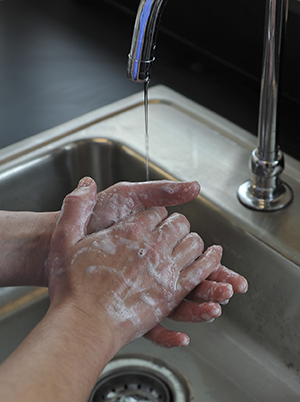Mastectomy: Healing at Home
Mastectomy: Healing at Home

Follow-up appointments will also be made so your healthcare provider can check on you as you heal.
In the future, tell all healthcare providers that you’ve had a mastectomy and on which side. You should not have your blood pressure taken, a blood draw, or IV (intravenous) line on that side.
Wearing a prosthesis
After surgery, you may be given a temporary prosthesis. It’s a soft breast form that fits into a bra. Some women wear breast forms to help balance weight and not have back strain. Other women wear them for appearance. Some women don't use them at all. Talk with your healthcare provider if you want a prescription for a permanent prosthesis. You may wear it when your cut (incision) feels less sore and swollen.
Seroma
A seroma is a large collection of fluid that occurs under the arm or under the incision. It can appear 5 to 10 days after surgery. A small seroma is normal. It’s likely to go away by itself in a few weeks. If you have a large seroma, your surgeon may drain (aspirate) it using a syringe and needle.
Lymphedema
Swelling of the arm and chest on the side of surgery is normal right after surgery. But it should get better as you heal. Swelling that doesn't get better is called lymphedema. It occurs when the normal flow of lymph in the arm is reduced. This can happen if lymph nodes under the arm are removed. Or it can happen if the underarm is treated with radiation therapy. Lymphedema can also occur long after surgery. Depending on the type of surgery and other treatments you get, you may be at risk for lymphedema for the rest of your life. To help limit problems:
Slowly return to normal use of the arm on the side of the surgery.
Protect your hand and arm from infection. Wash your hands often. And wear gloves when cleaning or gardening.
Keep the fluid moving in your operated arm. Don’t wear tight sleeves, elastic cuffs, bracelets, wristwatches, or tight rings on that arm.
Do exercises as instructed to help prevent swelling and improve circulation. For example, you may be told to squeeze a rubber ball with your hand.
When to call your healthcare provider
Call your healthcare provider right away if you have any of the following:
Fever of 100.4°F (38°C) or higher, or as advised by your healthcare provider
Chills
Cough, pain in the chest or calf, or shortness of breath
Increased pain, warmth, swelling, or redness near the surgical site
Drainage from the incision site
Bleeding that soaks the bandage
Seepage from the wound
Swelling in your hand, arm, or chest that gets worse or does not get better after surgery
Know what problems to watch for and when you need to call your healthcare provider. Also be sure you know how to get help after office hours and on weekends and holidays.
Updated:
February 13, 2018
Sources:
Weaver, C., Caring for a patient after mastectomy, Nursing 2009(39); 5 pp. 44-48
Reviewed By:
Cunningham, Louise, RN,Image reviewed by StayWell art team.,Stump-Sutliff, Kim, RN, MSN, AOCNS